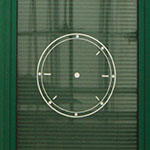Euroacademia Conferences
 Europe Inside-Out: Europe and Europeanness Exposed to Plural Observers (9th Edition) April 24 - 25, 2020
Europe Inside-Out: Europe and Europeanness Exposed to Plural Observers (9th Edition) April 24 - 25, 2020 Identities and Identifications: Politicized Uses of Collective Identities (9th Edition) June 12 - 13, 2020
Identities and Identifications: Politicized Uses of Collective Identities (9th Edition) June 12 - 13, 2020 8th Forum of Critical Studies: Asking Big Questions Again January 24 - 25, 2020
8th Forum of Critical Studies: Asking Big Questions Again January 24 - 25, 2020 Re-Inventing Eastern Europe (7th Edition) December 13 - 14, 2019
Re-Inventing Eastern Europe (7th Edition) December 13 - 14, 2019 The European Union and the Politicization of Europe (8th Edition) October 25 - 26, 2019
The European Union and the Politicization of Europe (8th Edition) October 25 - 26, 2019 Identities and Identifications: Politicized Uses of Collective Identities (8th Edition) June 28 - 29, 2019
Identities and Identifications: Politicized Uses of Collective Identities (8th Edition) June 28 - 29, 2019 The European Union and the Politicization of Europe (7th Edition) January 25 - 26, 2019
The European Union and the Politicization of Europe (7th Edition) January 25 - 26, 2019 7th Forum of Critical Studies: Asking Big Questions Again November 23 - 24, 2018
7th Forum of Critical Studies: Asking Big Questions Again November 23 - 24, 2018 Europe Inside-Out: Europe and Europeanness Exposed to Plural Observers (8th Edition) September 28 - 30, 2018
Europe Inside-Out: Europe and Europeanness Exposed to Plural Observers (8th Edition) September 28 - 30, 2018 Identities and Identifications: Politicized Uses of Collective Identities (7th Edition) June 14 - 15, 2018
Identities and Identifications: Politicized Uses of Collective Identities (7th Edition) June 14 - 15, 2018
Budapest’s ‘Memento Park’: Public Art, Communist Heritage and Contested Representations of the Past in Post-Communist Europe
-
-

-
Presentation speakers
- Jessie Rodgers, Central Saint Martins College of Art and Design, University of Arts, London, UK
- Download presentation
Abstract:
This paper uses an analysis of Memento Park, a park that contains forty-two of Budapest´s communist statues and monuments, to challenge discourses on communist heritage. It develops into an enquiry of the multiple paradoxes in the identities of sites displaying communist heritage in Eastern Europe, particularly those presenting works of monumental propaganda. It is centred around comparisons between Memento Park and similar parks in Lithuania, Bulgaria and Russia. All four parks deal with a dialogue on communist heritage that has been proliferated by dominant Western cultural markets since the fall of the Iron Curtain and was inherited from Cold War Western ideologies. Despite an overarching Occidental discourse, all four parks treat this heritage differently, raising questions as to how Memento Park views its objects on display. The legitimacy of Memento Park´s position in contemporary politics and society is also debated. Through a comparison with House of Terror, post-communist Hungary is considered as it turns to historical revisionism and nationalism in its attempts to absolve its involvement in the Holocaust and project the blame of the 1956 Hungarian Revolution onto contemporary socialists. Ultimately, the paper locates the Memento Park in discourses, in Hungary and abroad, on the treatment of communist heritage in post-communist Eastern Europe. By identifying the issues and paradoxes in the Park´s museological treatment of this heritage, the paper attempts to project a path for the Park to take that enables it to break down its spatial and temporal confines. Resolutely, finding that even though its monuments might be imprisoned in the Park, it is not necessary that Memento Park itself has to be kept away from an engaged dialogue with contemporary Budapest.
-
Related Presentations

Eastern Europe - Integral Part of Europe. Retrospective into the Future
- Gerhard Eichweber

















